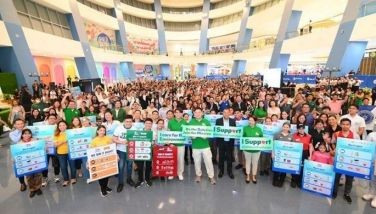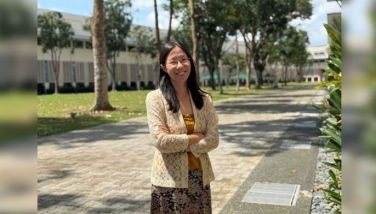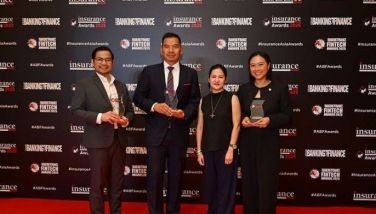Those potent presences
MANILA, Philippines - In 2008, the Asia-Europe Museums Network (ASEMUS) under the auspices of the Asia Europe Foundation (ASEF), opened the “Self and Other: Portraits from Asia and Europe” series of exhibitions at the Museum of Ethnology in Osaka, Japan. As a traveling exhibit, it intended to promote a better understanding, awareness and acceptance between Asians and Europeans. The Philippines, being a member of the said network, was committed to host its own rejoinder to the same theme.
“Bisa: Potent Presences,” our country’s contribution to the series, opened at the Upper Galleries of the Metropolitan Museum of Manila last May 20. Considered as one of the most ambitious projects of the Metropolitan Museum of Manila to date, it showcases important pieces from the Bangko Sentral ng Pilipinas (BSP), the Cultural Center of the Philippines (CCP) and other institutional and individual collections. No less than Dr. Patrick D. Flores, director of the Vargas Museum of the University of the Philippines, curated the exhibition. Flores said, “This exhibition is a response to the premise of ‘Self and Other...’ on the question of nature and character, of being human and of being different.”
Highlighted in this show are various relics, works of art and pieces of note that embrace the nation’s identity and culture. Traversing through this curatorial path is akin to unraveling the relationship between art’s visibility and meaning within the context of presentation and interpretation.
Stemming from the Filipino word “bias,” it evokes potency, efficacy, charm, enchantment, specter and prowess. Its equivalent in Bahasa Malayu is a word that connotes ability or the possibility of doing.
“It is animated by the word ‘bisa,’ the spirit that instills the world in which the self gains presence in light of others, without whom the self becomes singular and therefore never selfless. Self and other are fleshed out in time and place, how they merge in contexts and how they hope to venture beyond the pale of their conditions,” explains Flores.
 A painting of a gypsy girl by Jorge Pineda
A painting of a gypsy girl by Jorge Pineda Premised on this curatorial vision, Flores adeptly weaves our story into four sections, namely: Ibayo/Afterlife, which unfold visions of the future and the unknown; “Ganap/Here and Now,” which show material condition and struggle with nature; “Tuwina/Time and Again,” which illustrate the demands of history, repetition and change; and, “Dayo/Far and Away,” which explores the allure of the foreign, the allegory of the native/national. Contextualizing the visual narrative of each sections are various ethnographic and anthropological objects interspersed with objets d’art. It would be impossible not to pause and contemplate.
The diverse ecology of objects that comprise each section is a mix of the contemporary and historiography. Imagine an exhibit where Alfredo Esquillo Jr., Louie Cordero, Manuel Ocampo, Marina Cruz and Patricia Eustaquio’s works resonate with Fernando Amorsolo, Botong Francisco and the legendary Bohol master’s pieces. Envision how Nora Aunor’s boots, early 20th century photographs, Carlos Francisco’s watercolor drawings of costumes and stills from Manuel Conde’s films reveal traces of ourselves. Can you picture Lean Alejandro’s portrait beside an unidentified artist’s rendition of P. Francisco Paliola S.J. during the 1800s?
“This reflection on the theme through art, or the spirited making of reality’s many vital signs, demands yet another act: to sense the world and its limits and to struggle for its potential,” says Flores. This is the invisible thread that sews the exhibit together; while quotes from various texts and personages serve as embroidery to substantiate these thoughts.
Herein lies the strength of the exhibit. As a curator, Flores cleverly oversees the juxtaposition of each element to support the foundation of his curatorial premise. Moreover, Flores was able to elegantly convey our history in terms of salvation and sacrifice, kinship and place, culture and class, and what brings us together and pulls us apart as a people. Through his direction and initiative, the inter-disciplinary context of an exhibition was made possible. People who are interested in our past, in the arts, in the quest to achieving nationhood will most definitely find the trip to the Metropolitan Museum of Manila worth their time and effort.
* * *
 Installation shots of the Met’s “Bisa” exhibit
Installation shots of the Met’s “Bisa” exhibit “Bisa: Potent Presences” is on view until July 15. The Metropolitan Museum of Manila is at the Bangko Sentral Pilipinas Complex, Roxas Boulevard, Manila. For information, call 521-1517, 536-1566 and 523-0613, or visit www.metmuseum.ph.




















